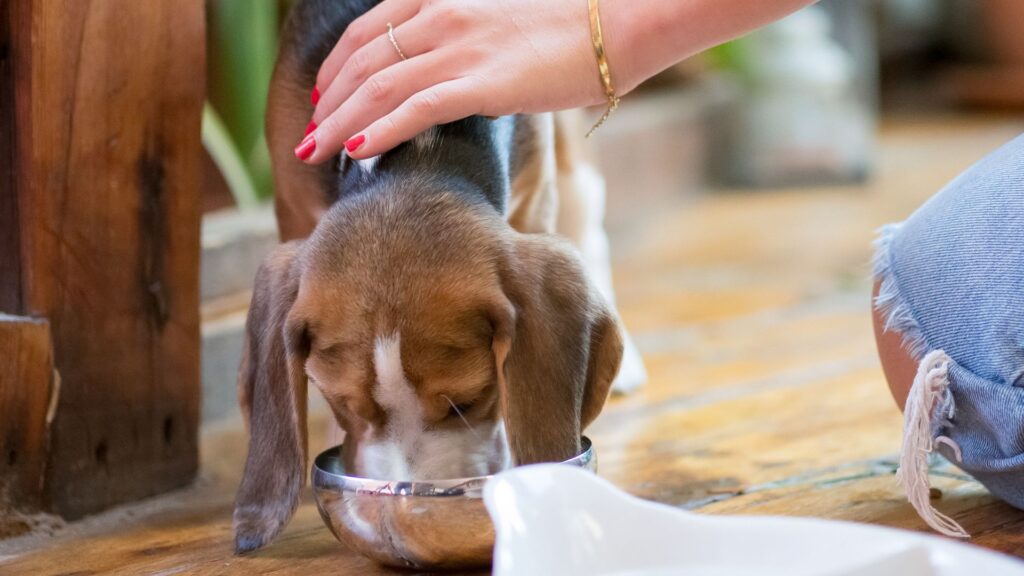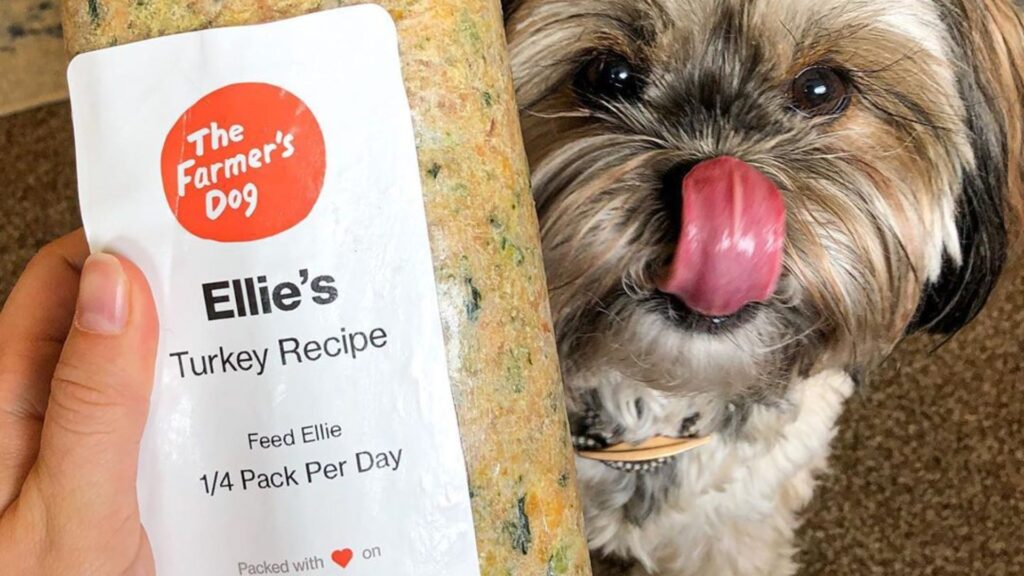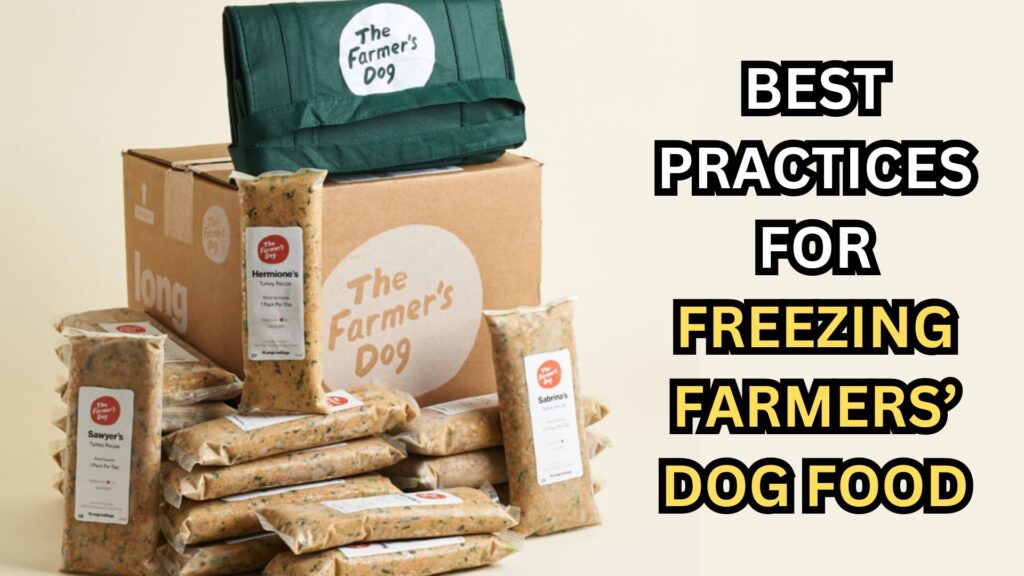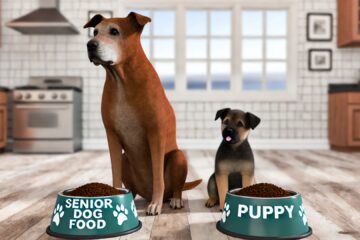In recent years, the trend of feeding dogs with frozen food has surged, reflecting a growing preference among pet owners for fresh, high-quality meals over traditional kibble. Brands like Farmer’s Dog have been at the forefront of this shift, offering personalized, pre-portioned, and nutrient-rich meals that promise to meet the specific dietary needs of pets.
However, this shift towards frozen food introduces new challenges for pet owners, particularly regarding storage and handling.
One common dilemma is whether it’s safe to refreeze dog food if it has been thawed but not used—perhaps due to overestimation of how much food is needed or an unexpected change in the feeding schedule.
This blog post aims to delve into the safety and advisability of refreezing Farmer’s Dog food, focusing on its impact on nutritional value and potential health implications for your pet.

The Importance of Handling Dog Food Safely
Proper storage and handling of dog food are paramount to preserving its nutritional value and preventing the growth of harmful bacteria that can lead to foodborne illnesses. The freshness and quality that make Farmer’s Dog food appealing also make it susceptible to spoilage if not handled correctly.
Like human food, the journey from freezer to bowl is fraught with potential pitfalls that can affect a pet’s health.
Farmer’s Dog, along with other premium frozen pet food brands, provides clear guidelines on storing and handling their products to ensure they remain as nutritious and safe as they were the day they were made.
Generally, these guidelines advise keeping the food frozen until ready to use, thawing it in the refrigerator to maintain a safe temperature, and using it within a certain timeframe to ensure freshness.
The advice is based on food safety principles designed to minimize the risk of bacterial contamination and ensure that the food your pet consumes is both safe and nutritionally valuable.

Can You Refreeze Farmer’s Dog Food?
The core question of whether you can refreeze Farmer’s Dog food—or any frozen dog food, for that matter—requires a nuanced answer that balances food safety with nutritional integrity.
Expert opinions on this matter, including those from veterinary nutritionists, generally caution against refreezing thawed food due to potential risks to both nutrition and safety. However, in some instances, it might be unavoidable.
Farmer’s Dog, like many responsible pet food brands, emphasizes the importance of following strict storage guidelines to preserve the quality and safety of their meals. These guidelines typically recommend against refreezing thawed food as a best practice.
The reasoning behind this advice is rooted in how freezing, thawing, and then refreezing can alter the food’s quality and safety profile.
How Refreezing Affects Nutritional Value and Safety
The process of freezing food is an effective way to preserve its nutritional value, texture, and safety for extended periods. However, once thawed, the food can undergo changes that may not be entirely reversible by refreezing.

Here’s how the cycle of freezing, thawing, and refreezing can impact dog food:
Nutritional Content:
Freezing does a good job of preserving nutrients, but repeated freeze-thaw cycles can degrade certain vitamins and minerals, potentially diminishing the food’s nutritional value over time.
Texture:
Thawing and refreezing can alter the food’s texture, making it less palatable to some dogs. Changes in texture can also affect the food’s digestibility.
Safety:
The primary concern with refreezing thawed food is the potential for bacterial growth during the thawing process. Bacteria thrive at temperatures between 40°F and 140°F (4°C and 60°C), a range easily reached if food is thawed on the countertop or in hot environments.
Refreezing does not kill bacteria; it merely slows their growth. Thus, any bacterial contamination that occurs during thawing can persist and potentially multiply when the food is thawed again for feeding.
Best Practices for Refreezing Dog Food
While the general advice is to avoid refreezing thawed dog food, there are measures you can take to minimize risks if you find yourself in a situation where refreezing seems necessary:

Minimize Thaw Time:
If you must refreeze, try to limit the time the food spends thawed. Refreezing food that has only been thawed in the refrigerator for a short period is safer than refreezing food that has been left out at room temperature.
Portion Control:
To avoid the need for refreezing, thaw smaller quantities of food. This can be facilitated by dividing the food into smaller portions before freezing, ensuring you only thaw what your dog will eat.
Maintain Cold Temperatures:
Always thaw dog food in the refrigerator, not at room temperature, to keep it out of the temperature danger zone for bacterial growth.
Alternative Strategies to Minimize the Need for Refreezing
Plan Ahead:
Try to estimate your dog’s food needs more accurately to avoid having excess thawed food. This might involve tracking how much your dog eats and adjusting portions accordingly.
Use a Cooler:
If you’re traveling or can’t store thawed food in a refrigerator immediately, using a cooler with ice packs can help keep the food at a safe temperature until it can be refrigerated or consumed.

While refreezing Farmer’s Dog food is not recommended, understanding the risks and how to mitigate them can help ensure your pet’s meals remain safe and nutritious.
Always prioritize following the brand’s storage guidelines and consult with a veterinary nutritionist for advice tailored to your pet’s specific dietary needs.
FAQs on Handling Farmer’s Dog Food
How long can you keep Farmer’s Dog food in the freezer before it loses its nutritional value?
Farmer’s Dog food is designed to be stored in the freezer to preserve its freshness and nutritional integrity. When kept frozen, the food can typically maintain its nutritional value for several months, up to the best by date provided by the manufacturer.
It’s essential to store the food properly in airtight packaging to minimize exposure to air and prevent freezer burn, which can affect taste and texture.
Is it better to thaw Farmer’s Dog food in the refrigerator or at room temperature?
It is always recommended to thaw Farmer’s Dog food in the refrigerator, not at room temperature. Thawing in the refrigerator ensures the food slowly reaches a safe temperature that minimizes the risk of bacterial growth.
Room temperature thawing can allow the outer layers of the food to enter the “danger zone” temperatures (between 40°F and 140°F) where bacteria can rapidly multiply, even if the center remains frozen.
Can I refreeze Farmer’s Dog food if it was only partially thawed?
Refreezing partially thawed dog food is generally not recommended due to the potential for bacterial growth during the thawing process.
If the food has been kept in the refrigerator and only partially thawed, it is safer to use it as soon as possible rather than refreezing.
Always assess the texture, smell, and appearance of the food to ensure it’s safe for your pet.
How can I tell if thawed dog food is no longer safe to feed my pet?
Thawed dog food that’s no longer safe may exhibit several signs, including an off odor, discoloration, or visible signs of spoilage such as mold.
If the food has been thawed in the refrigerator for more than a few days or has been left out at room temperature for more than 2 hours, it’s best to err on the side of caution and dispose of it.
Your pet’s health is paramount, and feeding spoiled food can lead to foodborne illness.
Summary
Throughout this blog post, we’ve explored the intricacies of handling Farmer’s Dog food, focusing on the crucial aspects of freezing, thawing, and the potential for refreezing. The key takeaway is the importance of adhering to safe practices when storing and handling dog food to preserve its nutritional value and ensure the safety of your pet.
While the general recommendation is against refreezing thawed dog food, understanding the reasons behind this advice helps pet owners make informed decisions.
We’ve delved into how refreezing can impact the nutritional content, texture, and safety of the food, emphasizing the potential risks of bacterial growth. Best practices for managing dog food storage and minimizing the need for refreezing have been outlined, providing practical solutions for pet owners.
It’s crucial to follow the manufacturer’s guidelines and consult with a veterinarian for personalized advice regarding your pet’s nutrition and safety.
Every pet is unique, and their dietary needs can vary significantly. By staying informed and cautious about food handling practices, you can ensure your furry friend enjoys the health benefits of high-quality, nutritious meals like those offered by Farmer’s Dog, without compromise.


